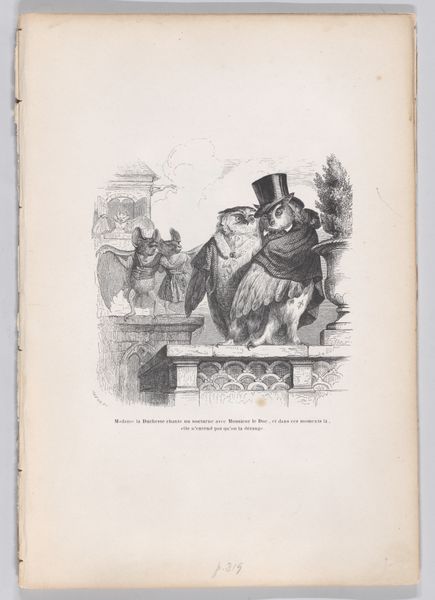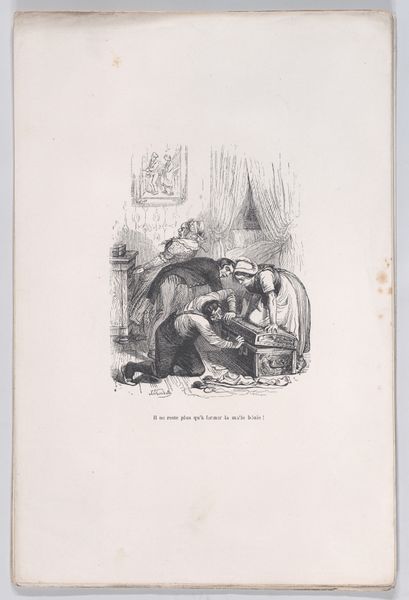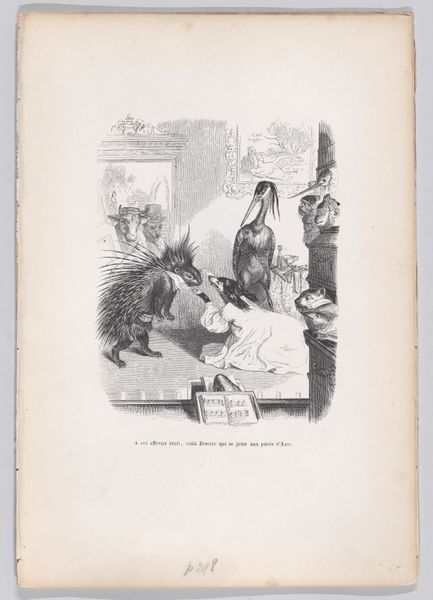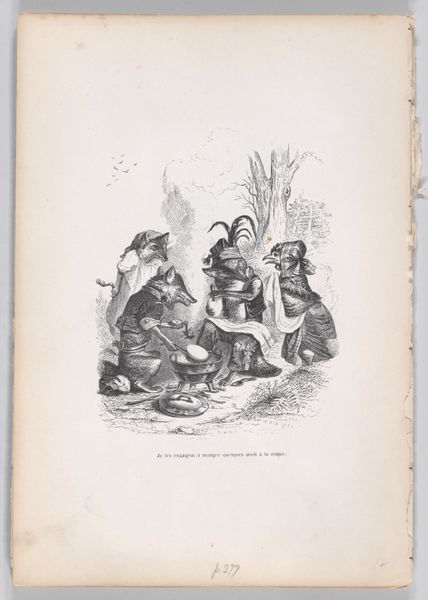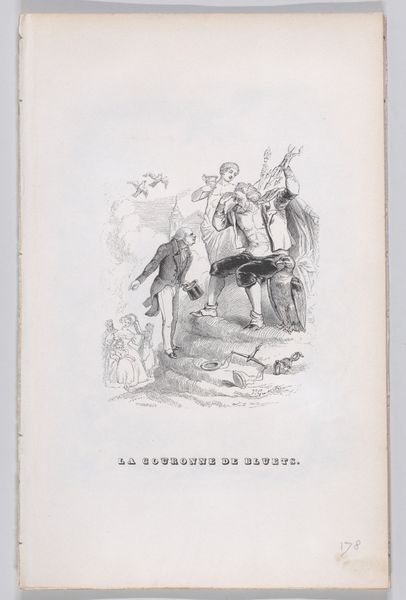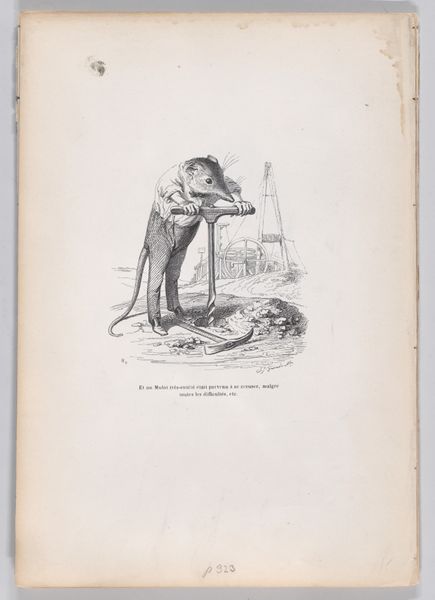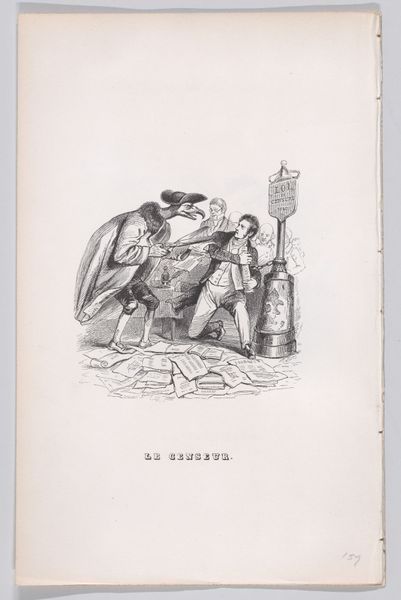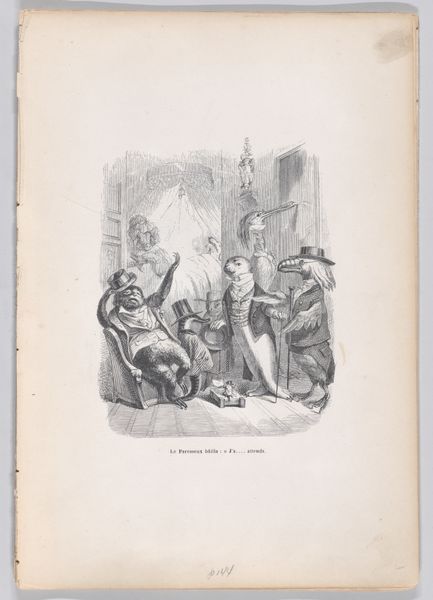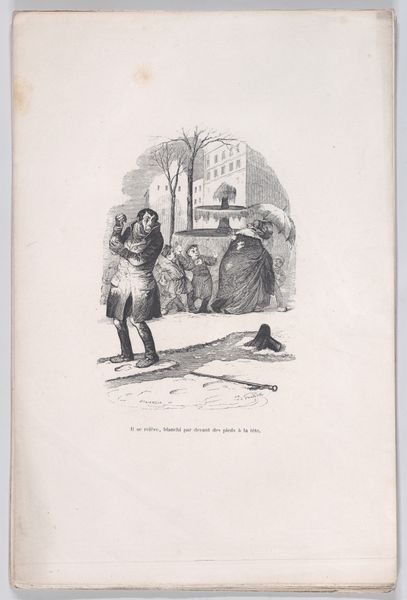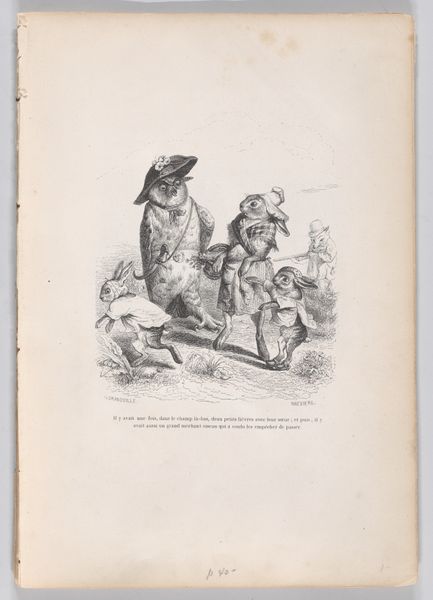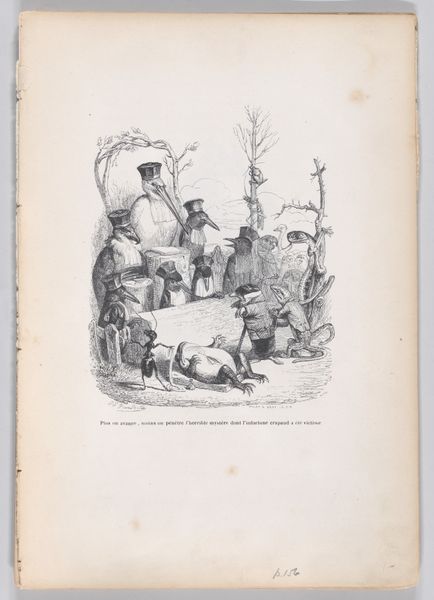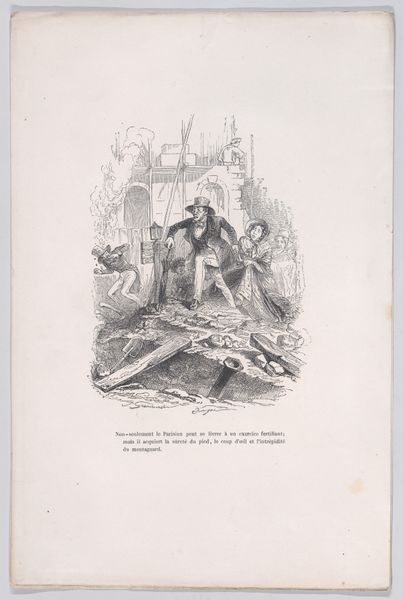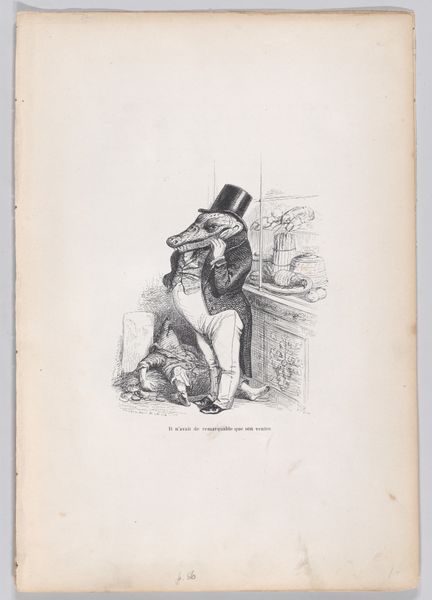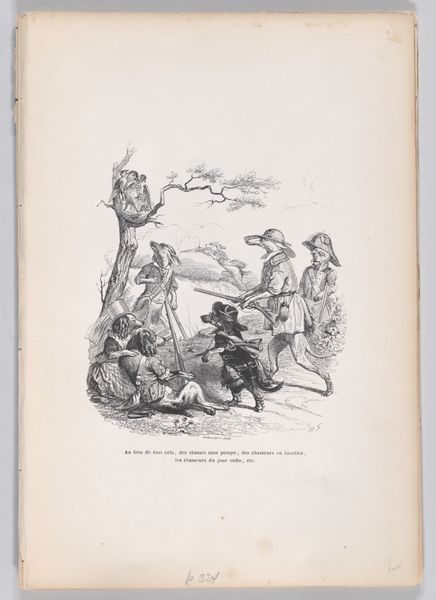
drawing, print
#
pencil drawn
#
drawing
#
toned paper
#
light pencil work
#
ink paper printed
# print
#
pencil sketch
#
coloured pencil
#
watercolour bleed
#
watercolour illustration
#
remaining negative space
#
watercolor
Dimensions: Sheet: 8 5/8 × 5 1/2 in. (21.9 × 14 cm)
Copyright: Public Domain
Editor: So, this is J.J. Grandville's "Brennus" from 1836, part of Béranger's collected works. It looks like a print, maybe with watercolor? There's a lot of focus on figures dressed in furs. What do you make of this work? Curator: Grandville’s illustrations, often satirical, engage deeply with the social fabric of his time. Here, the choice of printmaking, a reproducible medium, aligns with Béranger's popular poetry, which itself aimed at a broad audience. Think about the material conditions: how did print technology influence the dissemination of ideas? Editor: That makes sense. It allowed for mass distribution. But how does that relate to the imagery? I'm seeing furs and primitive garb. Curator: Consider the romanticized view of the past that was circulating in the 19th century. Who is this 'Brennus'? Is Grandville commenting on the perceived barbarity versus civilization, perhaps critiquing contemporary society through historical allegory? Editor: It's like he's contrasting the material reality of the working class with some ideal past... or maybe showing that the past was also based on raw materials and labor? Curator: Exactly! The furs, the rough garments - these speak to the tangible, the constructed. And the printmaking process itself highlights labor. Was Grandville subtly suggesting the manufactured nature of historical narratives? How does the industrial labor contrast the older materials in use here? Editor: That’s a really interesting way to look at it! It pushes me to consider both the material production and what's being depicted and what it signifies. I definitely learned a lot, considering both how the artwork was created and what it represents in terms of materials and context. Curator: It all comes back to considering how things are made, disseminated, and consumed, doesn't it? Always a fruitful area for inquiry!
Comments
No comments
Be the first to comment and join the conversation on the ultimate creative platform.
